The 1970s were truly the wild west of home cooking. It was an era when convenience trumped flavor, gelatin was considered a food group, and recipe developers seemed to ask “but what if we added mayonnaise?” to literally everything. As we look back with equal parts nostalgia and horror at the dinner tables of our childhoods, it’s hard to believe we not only ate these concoctions but actually requested seconds. Let’s take a journey through the strangest culinary creations that somehow captured our hearts and stomachs during the decade of disco.
1. Aspic Everything

Nothing says vintage cuisine quite like savory gelatin molds containing suspended meats, vegetables, and mayonnaise. These wobbly delights appeared at every potluck and holiday gathering, with ingredients ranging from canned tuna to olives to hard-boiled eggs trapped like prehistoric insects in amber. Cookbooks featured elaborate “salads” that combined gelatin with everything from corned beef to seafood, creating dishes that quivered ominously on the plate. Despite their questionable appearance, these molded creations were considered the height of sophistication, especially when unmolded successfully onto a bed of iceberg lettuce. Tasting Table sinks its teeth into all things aspic.
The strangest iterations included “Perfection Salad” with suspended cabbage and carrots, “Crown Jewel Dessert” with cubed colored gelatin in a creamy mold, and various seafood aspics that combined gelatin with canned salmon or shrimp. Modern food sensibilities might revolt at the concept of meat suspended in gelatin, but in the 1970s, it represented the pinnacle of hostess achievement. The complex layers and careful unmolding required genuine culinary skill, even if the end result resembled something from a science fiction movie.
2. Fondue Frenzy
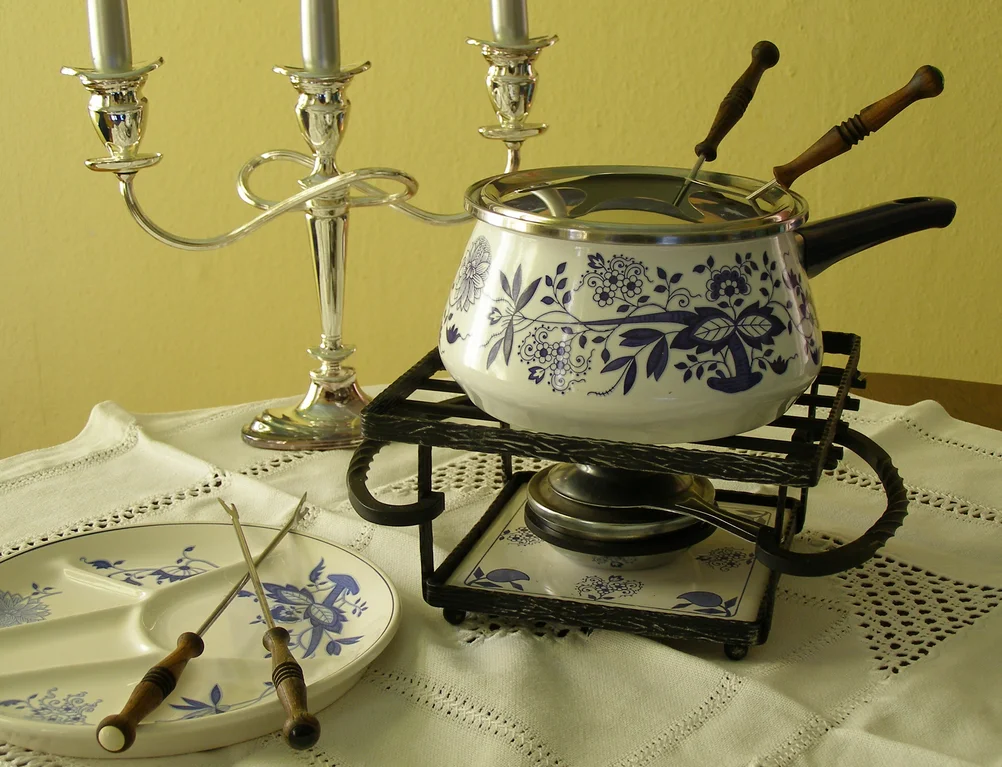
The 1970s home wasn’t complete without a fondue pot, preferably in harvest gold or avocado green, allowing families to dip everything imaginable into bubbling cheese or oil. Dinner parties centered around these communal cooking experiences, where guests would spear cubes of bread, meat, or fruit and cook them tableside in what now seems like a remarkably dangerous dining activity. The social fondue experience came with strange etiquette rules, including penalties like kissing the person next to you if you lost your food in the pot. In particular, Wisconsin Cheese is very proud and excited to review the history of fondue as a cultural culinary staple of the standard American table.
While cheese fondue remains delicious by modern standards, the 1970s took the concept to extremes with chocolate fondue featuring marshmallows and pound cake, and oil fondue where raw meat was cooked in bubbling oil at the table. Popular fondue cookbooks suggested increasingly bizarre dipping combinations, including cocktail weenies, maraschino cherries, and even sandwich spreads. The fondue craze eventually melted away, but not before creating countless burnt tongues and oil-splattered polyester shirts across America.
3. Hamburger Helper and Its Homemade Impersonators
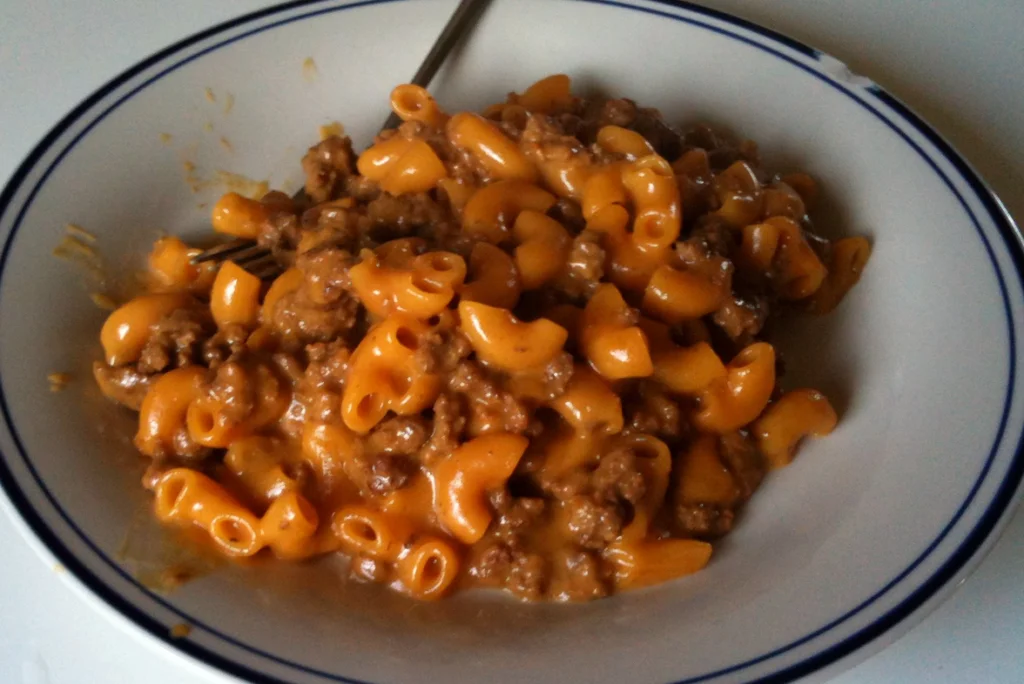
The 1970s was the heyday of hamburger-based cuisine, with Hamburger Helper launching in 1971 and quickly becoming a staple in households looking to stretch their meat budget. Not content with the boxed versions, home cooks created their own variations by mixing ground beef with cream of mushroom soup, macaroni, and whatever vegetables needed to be used up from the crisper drawer. These one-dish wonders often featured unusual flavor combinations like ground beef, elbow macaroni, corn, and crushed potato chips as a topping. The Daily Meal writes that Hamburger Helper has a history that’s as fascinating as the product is nostalgic.
The creativity seemed endless, with recipes for “Hamburger Pizza Casserole,” “Cheeseburger Pie,” and the infamous “Roman Holiday Casserole” that combined ground beef with tomato sauce, noodles, and a surprising amount of oregano. These dishes reflected both economic necessity and the decade’s fascination with convenient, one-pot meals that could feed a family with minimal fuss. While modern food trends have moved toward fresher ingredients, there’s still something nostalgically comforting about these hamburger concoctions that fueled countless childhood dinners.
4. Jell-O Salads as Side Dishes
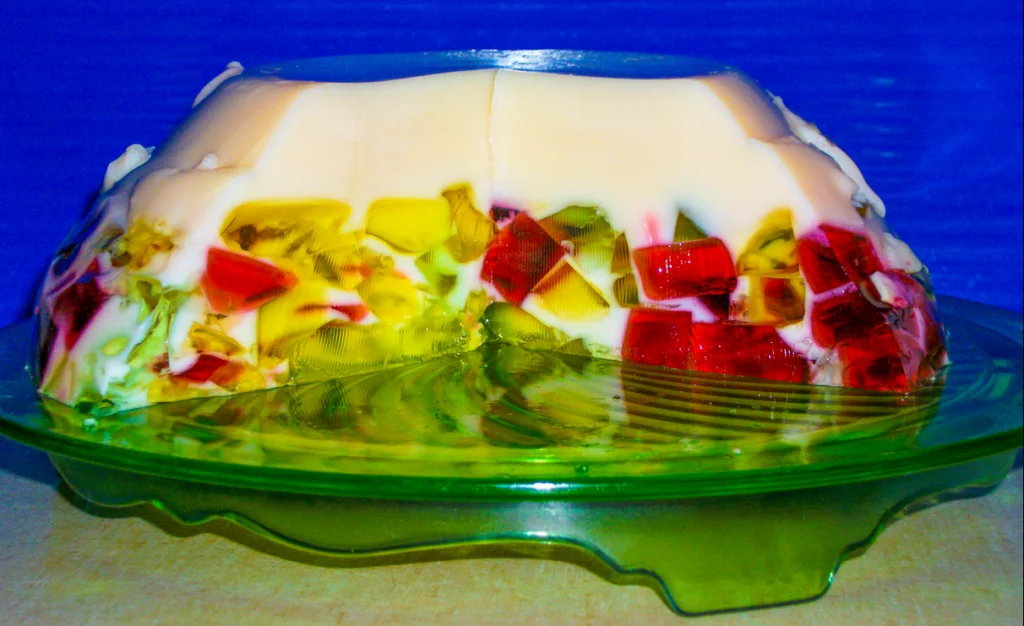
The 1970s housewife had an unparalleled talent for transforming any food into a Jell-O creation, particularly in the mysterious category of “salads” that contained no actual lettuce. Lime Jell-O mysteriously became the base for dishes containing cottage cheese, crushed pineapple, and chopped celery – a combination that confused the palate while delighting the eye with its vibrant green hue. Recipe cards from the era reveal concoctions like “Sunshine Salad” with lemon Jell-O and shredded carrots or “Christmas Ribbon Salad” with alternating layers of red and green gelatin.
The most bewildering aspect of these creations was their placement in the meal – not as desserts, but served alongside main dishes like ham or turkey. Particularly popular for holiday meals, these “salads” often featured special presentations, including molding Jell-O in bundt pans or creating complicated layered effects that took hours to perfect. Despite their odd ingredient combinations and questionable nutritional value, these colorful creations were points of pride for many home cooks and expected additions to any respectable dinner spread.
5. Stuffed Bell Peppers of Mystery

The humble bell pepper became a vessel for countless experimental fillings during the 1970s, with recipes suggesting stuffings that ranged from the expected rice and ground beef to more unusual combinations. These edible containers often housed mixtures featuring instant rice, canned tomato sauce, and whatever leftovers needed recycling, all topped with an essential layer of melted processed cheese. Some particularly adventurous versions included crushed potato chips, water chestnuts, or cream of celery soup mixed into the filling.
What made these creations particularly distinct was the peppers themselves, which were often barely cooked, resulting in an awkward contrast between crisp pepper and soft filling. Recipe collections from the era reveal variations like “Fiesta Stuffed Peppers” containing taco seasoning and corn, or “Cheeseburger Stuffed Peppers” mimicking fast food flavors in a supposedly healthier format. While stuffed peppers still exist today, modern versions tend to feature fresher ingredients and more international flavor profiles than their 1970s counterparts.
6. Pineapple Ham Abominations
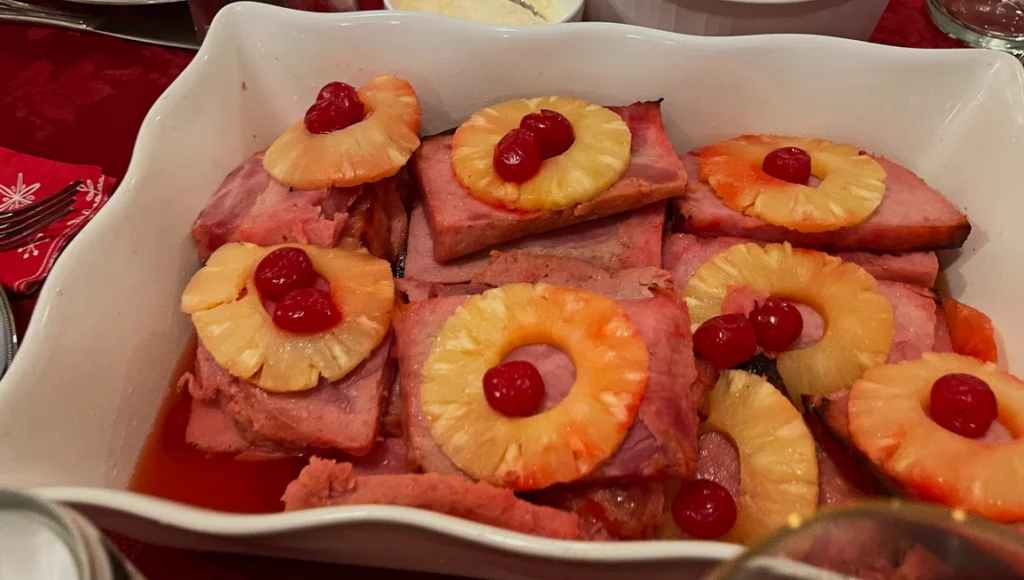
No protein suffered more creative indignities in the 1970s than ham, particularly when paired with its constant companion, canned pineapple. Beyond the classic pineapple rings attached with maraschino cherries and cloves, ham endured glazes made from combinations of pineapple juice, brown sugar, mustard, and often peculiar additions like ginger ale or mayonnaise. Holiday tables nationwide featured these sweet-and-savory hams with their caramelized exteriors and fruity accoutrements.
The ham’s tropical vacation didn’t end there, as leftover ham would reappear in casseroles containing pineapple chunks, canned sweet potatoes, and marshmallows. Special occasion recipes suggested “Hawaiian Ham Loaf,” which combined ground ham with crushed pineapple and bread crumbs, shaped into a loaf and topped with a glaze made from pineapple juice and brown sugar. The pineapple-ham pairing became so ubiquitous that it seemed impossible to serve ham without its fruity companion, creating a flavor combination that remains divisive in culinary circles.
7. TV Dinner Revolution

The 1970s embraced the compartmentalized TV dinner as both technological marvel and acceptable family meal option, with aluminum trays of salisbury steak, fried chicken, or turkey with gravy holding court in freezers across America. These meals featured mysteriously identical mashed potatoes, corn that maintained the same exact texture regardless of heating time, and brownie desserts that were simultaneously burnt and frozen. Despite their culinary shortcomings, these dinners represented freedom from cooking and dish-washing, making them particularly popular with kids who enjoyed eating while watching “The Brady Bunch.”
The most beloved varieties included the fried chicken dinner with its impossibly uniform corn cob section, the turkey dinner with stuffing that somehow tasted like the aluminum tray, and the salisbury steak with its gravy of indeterminate origin. Special “Deluxe” versions added appetizers like fried cheese or tiny cocktail shrimp, elevating the TV dinner experience to gourmet status in the eyes of 1970s diners. While modern frozen meals have improved in quality and variety, they lack the charm of those original compartmentalized trays that taught a generation that vegetables should be uniformly square.
8. Impossible Pies
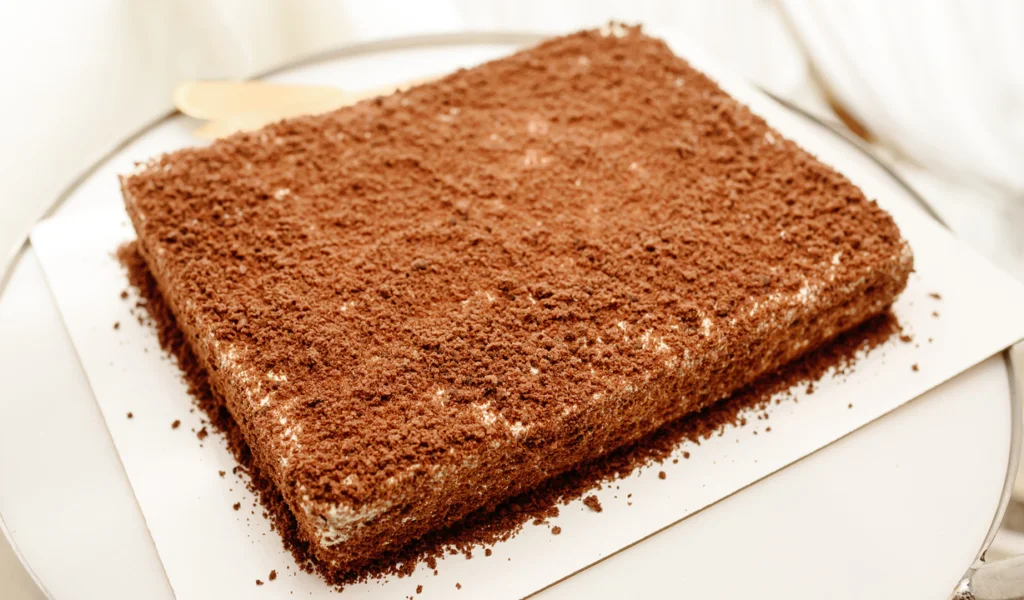
The “Impossible Pie” phenomenon, launched by Bisquick, created an entire category of magical one-dish wonders that formed their own crusts while baking. These curious creations required home cooks to blend Bisquick with eggs, butter, and various fillings, then pour the mixture into a pie plate where science would supposedly create distinct layers of crust, filling, and topping. The most famous version, Impossible Coconut Pie, promised to transform a blended batter into a three-layer dessert with minimal effort.
The concept quickly expanded beyond desserts to include dinner versions like Impossible Cheeseburger Pie, Impossible Taco Pie, and the particularly unusual Impossible Seafood Pie featuring canned tuna or salmon. Recipe developers seemed determined to make everything “impossible,” resulting in increasingly bizarre combinations that tested the limits of what Bisquick could actually do. While the results rarely matched the perfectly layered pictures in magazine advertisements, families embraced these easy creations that combined main dish, starch, and vegetables in one questionable but convenient package.
9. Unrecognizable Casseroles
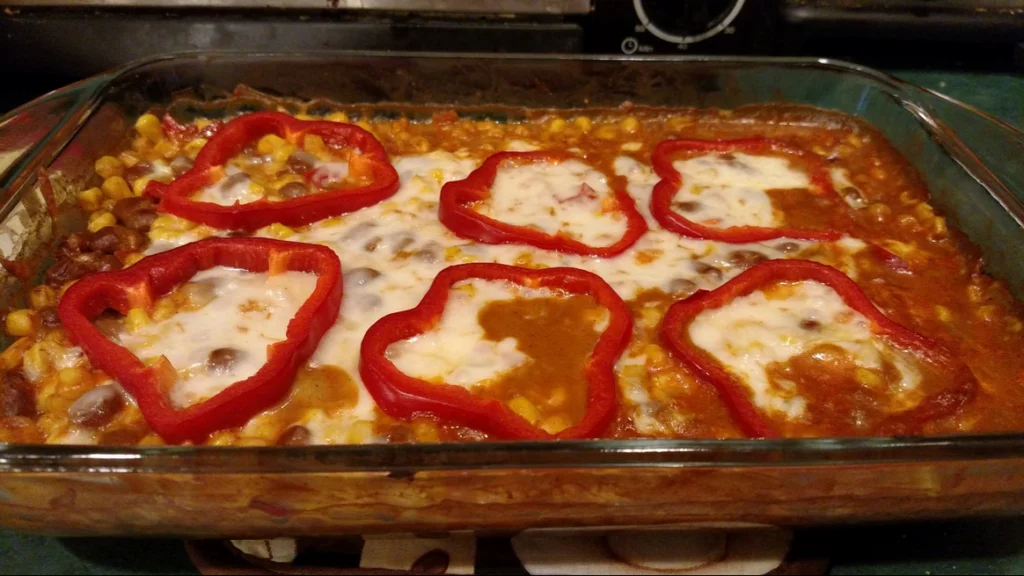
The 1970s elevated the casserole to an art form, combining ingredients that had no business sharing space in the same dish. The essential formula typically involved a protein (often canned tuna or leftover meat), a starch (usually rice or noodles), a binder (invariably cream of mushroom soup), and a crunchy topping (commonly crushed potato chips or crispy onions). Famous examples included the enduring Tuna Noodle Casserole, Green Bean Casserole, and the more questionable Ham and Banana Casserole, which yes, combined ham and bananas under a blanket of cheese.
Community cookbooks from the era reveal increasingly creative combinations like “Chinese” casseroles featuring chow mein noodles and water chestnuts, “Mexican” versions with crushed tortilla chips and canned enchilada sauce, and “Hawaiian” variations inevitably containing pineapple chunks. These dishes were valued for their make-ahead convenience and ability to transform leftovers into something ostensibly new and exciting. Despite their often questionable flavor combinations, these casseroles represented love and practicality, feeding families efficiently while creating distinct memories of dinnertime in the 1970s.
10. Cheese Balls and Other Spreadable Appetizers
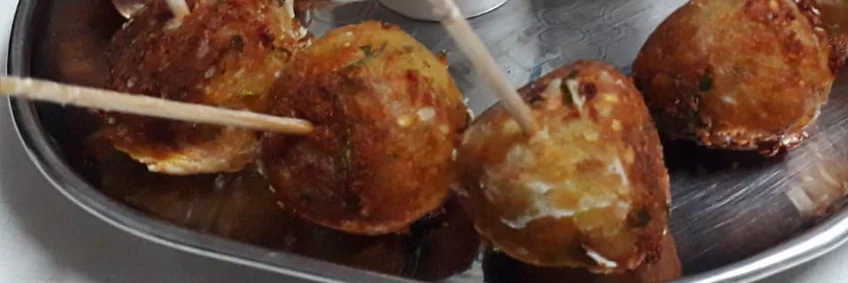
No 1970s gathering was complete without a cheese ball, ideally rolled in chopped nuts and served with Ritz crackers. These dense spheres of processed cheese, cream cheese, and flavor packets created centerpieces at parties, slowly softening throughout the evening as guests repeatedly plunged crackers into their depths. Variations included the “Port Wine Cheese Ball” with its distinctive pink marbling, the “Ranch Cheese Log” shaped into a cylinder rather than a ball, and the ambitious “Pinecone Cheese Spread” shaped and decorated to resemble an actual pinecone.
Accompaniments to the cheese ball included “Clam Dip” made with canned clams and sour cream, “Onion Dip” created by mixing dried onion soup mix with sour cream, and various spreads featuring deviled ham or dried beef. These appetizers typically appeared on plates surrounded by concentric circles of crackers, celery sticks, and the occasional radish rose. Despite their simplicity, these spreadable starters were considered sophisticated party fare, even when serving them meant leaving finger indentations visible in the cheese ball’s carefully crafted surface.
11. Pasta Innovations Gone Wrong
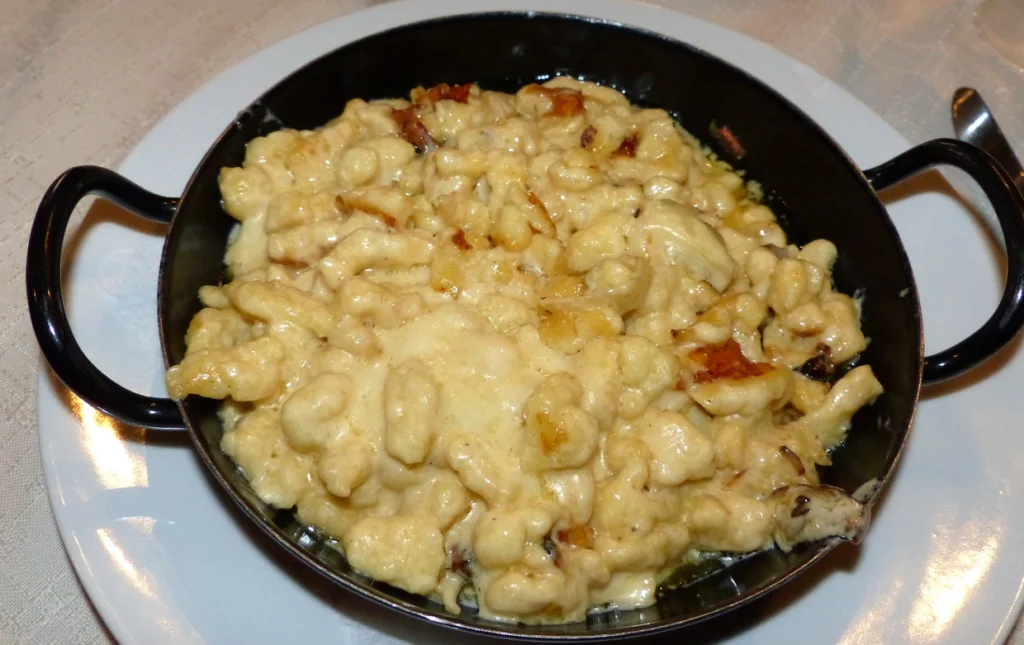
Pasta in the 1970s underwent transformations that Italian grandmothers might consider criminal, including the ubiquitous Spaghetti Pie that bound leftover pasta with eggs and cheese into a sliceable casserole. Home cooks experimented with additions like canned corn, sliced hot dogs, or crushed pineapple to standard pasta dishes, creating versions that bore little resemblance to their Mediterranean origins. Particularly noteworthy was the popularity of “Skillet Spaghetti,” where uncooked pasta was added directly to sauce and simmered until surprisingly edible.
Innovations included “Spaghetti Salad” served cold with Italian dressing and raw vegetables, “Macaroni Loaf” that could be sliced like meatloaf, and “Taco Spaghetti” that combined two entirely different cultural cuisines into one confusing dish. Perhaps most controversial was the practice of adding brown sugar or a hint of cinnamon to tomato sauce, creating a sweetness that many baby boomers still crave despite knowing better. While Italian-American cuisine has since become more authentic, these unusual pasta preparations created core memories for a generation that grew up thinking Franco-American SpaghettiOs were a reasonable approximation of Italian food.
12. Ambrosia and Other “Health” Desserts
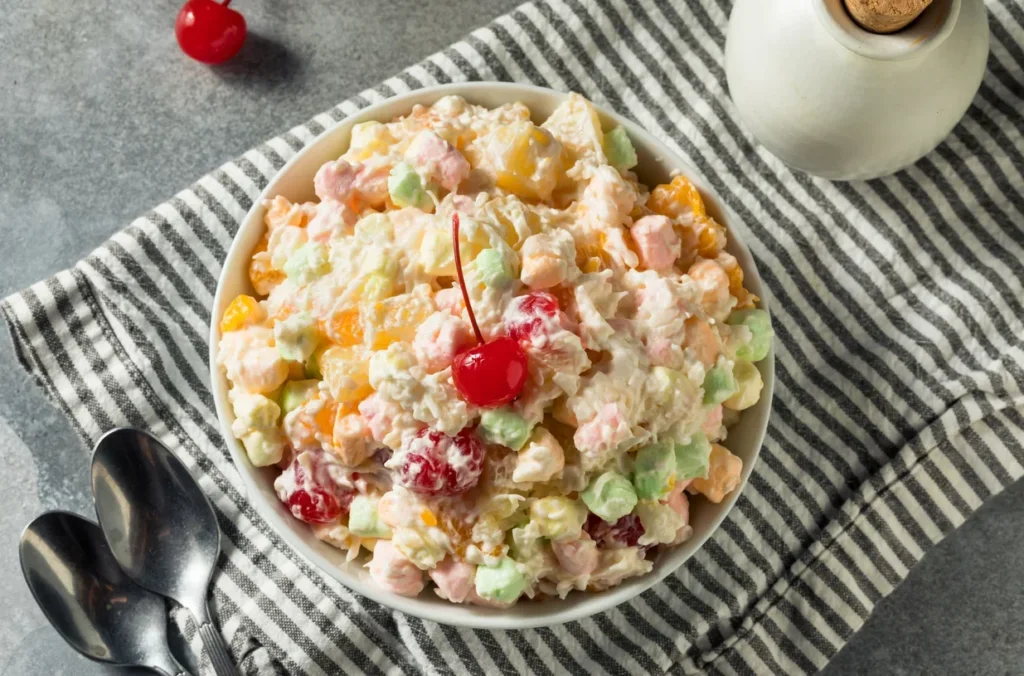
The 1970s mastered the art of disguising dessert as a healthy option, primarily through the addition of marshmallows to fruit. Ambrosia salad combined canned mandarin oranges, pineapple chunks, coconut, marshmallows, and sometimes maraschino cherries in a sweet soup of heavy cream or sour cream or, for the truly adventurous, a combination of mayonnaise and Cool Whip. This technicolor creation somehow qualified as a “fruit salad” despite containing more manufactured ingredients than actual fruit.
Other variations included “Watergate Salad” (pistachio pudding mix with pineapple, marshmallows, and Cool Whip), “Pineapple Fluff” (similar but with vanilla pudding), and “Five Cup Salad” (equal measures of five ingredients, including sour cream and marshmallows). The “salad” designation apparently absolved diners from considering these dishes as desserts, allowing them to appear alongside main courses at potlucks and holiday meals. Despite their nutritional questionability, these sweet concoctions provided a comforting conclusion to meals, creating creamy, fruity flavors that many still secretly crave despite their culinary comeuppance.
As we look back at these curious culinary creations, it’s easy to chuckle at the excesses and strange combinations that defined 1970s home cooking. Yet there’s something endearing about this era of experimentation, when convenience products opened new possibilities and home cooks bravely combined ingredients in ways never before attempted. These dishes tell the story of a changing America – busy families seeking convenience, hostesses embracing new products, and a food industry eager to simplify cooking with increasingly processed options. While few of us would choose to return to a diet of aspic and Impossible Pies, we can appreciate these odd dishes for what they were: creative solutions for their time and tasty memories that, against all odds, we somehow loved.


